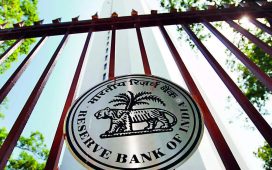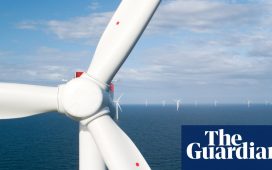![]()
“Many Indian entrepreneurs are comfortable outsourcing IT designs. India is seen as an outsourcing and not as a product nation. Therefore, I always encourage companies to focus on purpose-built silicon,” Tan, 65, told ET.
In the country to attend Anant Ambani’s wedding, Tan also held meetings with India Inc. chiefs and will be attending the launch of Yali Capital, the first homegrown deep-tech venture fund with a strong emphasis on chip design in Bengaluru on Monday. He will be the fund’s anchor investor and advisor. In between his busy schedule he spent two hours to discuss a wide range of topics ranging from the New Cold War over chips to Apple’s strategy to frontier technologies and materials like carbon nitrate, silicon carbide glass and even artificial diamonds that will run next generation EV batteries or data centres.
“The next step for India should be not to focus only on semiconductor fabrication, but to design and build its own products and create its own homegrown semiconductor brand,” said Tan, adding that he was “glad that the Indian government realised that semiconductors are so important as a foundation of any computing device.”
Tan’s comments gain significance in an artificial intelligence-driven, post-Covid world where where semiconductor chips — that fire everything from our cell phones, internet and cloud networks, cars or help in the latest robotic surgeries and breakthroughs in cancer cure or even boost industrial and manufacturing productivity — have become the single most important geo-strategic tool with nations and computing prowess the biggest weapon. A new tech race between Washington and Beijing has split the world into two cohorts.
This “will be the new reality one has to live with,” Tan said. But it’s counterintuitive for a multi-billion dollar industry that has relied on a complex web of inter-linked supply chains, thriving on open borders and free trade. Blueprints designed by Indian-origin engineers in Silicon Valley or Israel for companies like ARM that are Japanese owned but UK based, with tools made by a specialized Dutch company and then shipped to Taiwan to be packaged in the mega facilities of companies like Taiwan Semiconductor Manufacturing Company (TCMC) before the final assembly in China. India is estimated to be home to a fifth of the world’s semiconductor R&D talent.For companies like Apple that are looking to reduce their dependence on China, India can emerge as the “third most crucial semiconductor hub,” said Tan. Apple makes iPhones in India through its contract manufacturers, including Tata Electronics. After nearly three decades of sporadic initiatives, India finally has seen some landmark business ventures on the chip front after the Centre launched the India Semiconductor Mission. The Tatas, Murugappa Group and America’s Micron have committed to invest nearly $18 billion to build chip design, fabrication, assembly, testing and packaging units.
Global giants such as Tower Semiconductors, Foxconn, Simmtech, AMD, Kaynes Technology as well as homegrown IT services and engineering companies like HCL and L&T are also on domestic semiconductor design and chip fabrication, giving a boost to the ambitious government electronics export target of $300 billion by next year.
India may have the IT services backbone to back its own semiconductor foundries, which Tan argues is “a services play,” but building fabs is not that simple. “It’s very important to have the infrastructure, consistent power and water. India still needs to improve on that,” he pointed out.
He suggested that India should move with care, given the enormous investments involved.
“If I were to do fab, I would start with mixed signal (analog and digital processors), power management, image sensors–those have volumes and don’t need leading-edge processors. I call them feature-rich foundry,” said Tan.
“Leading-edge node processing foundries that manufacture the latest and most advanced sub-5-nanometre chips for Nvidia or Qualcomm, AMD and are used for data centres, cell phones and laptop processors–are very expensive. Each fab needs a $20-25 billion investment and if you don’t have a customer that is committed, it’s very risky. You need at least one to start safely and over time you can diversify.”
The challenge will always be to become the lowest cost producer yet having the most advanced technology. “Only then can you deliver consistent quality and yield and demand the best customers to come,” believes Tan.
In that context, “Apple is a big win … They are committed to diversify out of China. Otherwise, customers will just shop around to find the best cost. If you don’t provide consistent delivery, they will just walk away, ” he emphasises.
A nuclear engineer from Massachusetts Institute of Technology (MIT) turned venture capitalist turned executive CEO, the dosa loving, Malaysian born, Tan is also a sought-after advisor for governments like Taiwan or tech titans like Masayoshi Son and Jensen Huang for his contrarian outlook. But his cult status comes from turning around Cadence Design as a first-time chief executive from a near bankrupt US chip design company in 2008 into a $52 billion colossus in 13 years, giving shareholders a near-78 times return.
Even as the founder chairman of San Francisco VC fund Walden International with $5 billion AUM, he bucked the establishment and backed Asian challengers of the mid 90’s, and profited when most of his bets either listed at a premium around the world or got acquired by the top global corporations like Microsoft, Broadcom, Sony, Qualcomm, Amazon, Marvell among others for a significant premium.
Tan sees several future growth drivers for deep tech — 5G & 6G mobility, hyperscale computing, cloud, automotive, edge AI and Generative AI, Industrial IOT – that will help the semiconductors become a $1 trillion industry even before 20230. Nvidia Corp’s market value is already at $3.8 trillion.
But he remains worried about the impact it would have on climate change. It is estimated 20% of global electricity supply will go towards powering just data centres alone. “The world underestimated the power requirement by 4 times. Processors are extremely power-hungry,” he said. “For instance, the NVIDIA Blackwell chips need 2700 watt of power each. Power management, cloud infrastructure, memory innovation and cooling technologies therefore are the most critical areas for organisations to focus on. Otherwise we will have shortages… Memory innovation is still slow to adopt into AI workload, same thing with cloud infrastructure. I work very closely with hyperscalers, they all recognise network switches and memory storage are not able to cope up with huge data storage requirements.”











